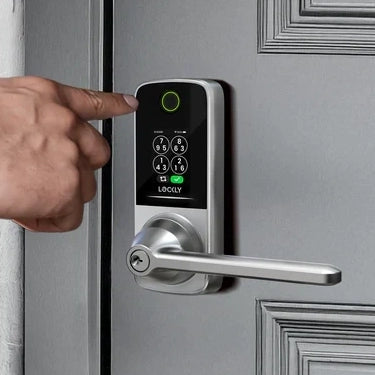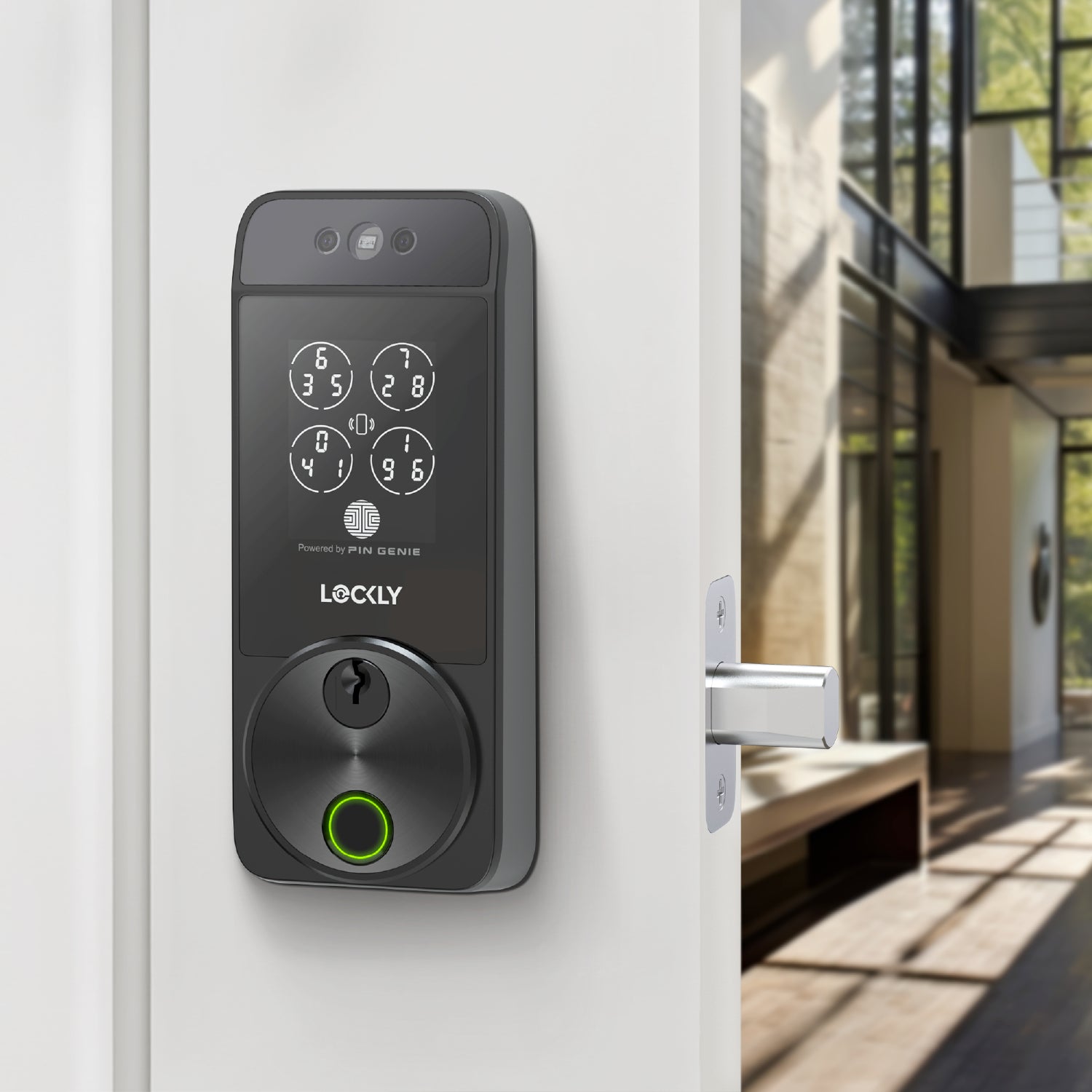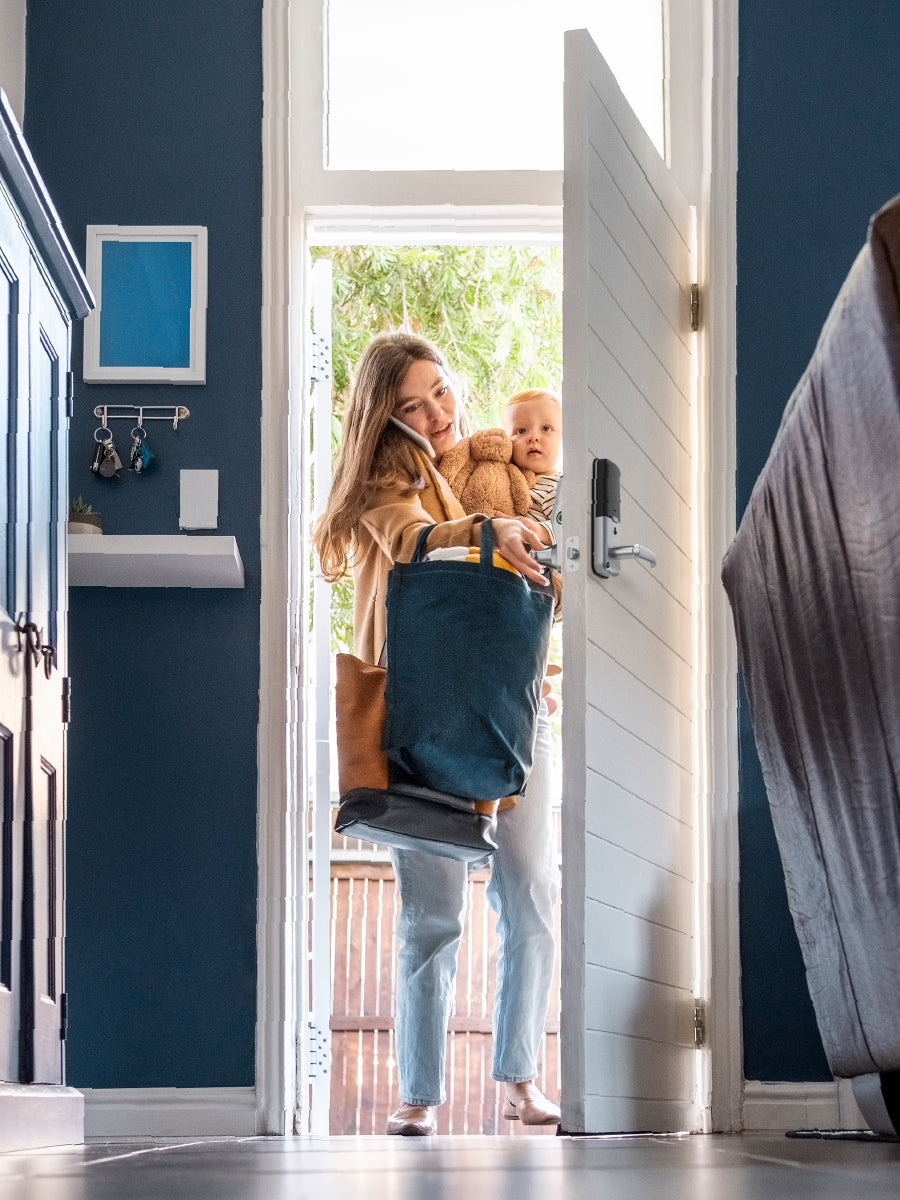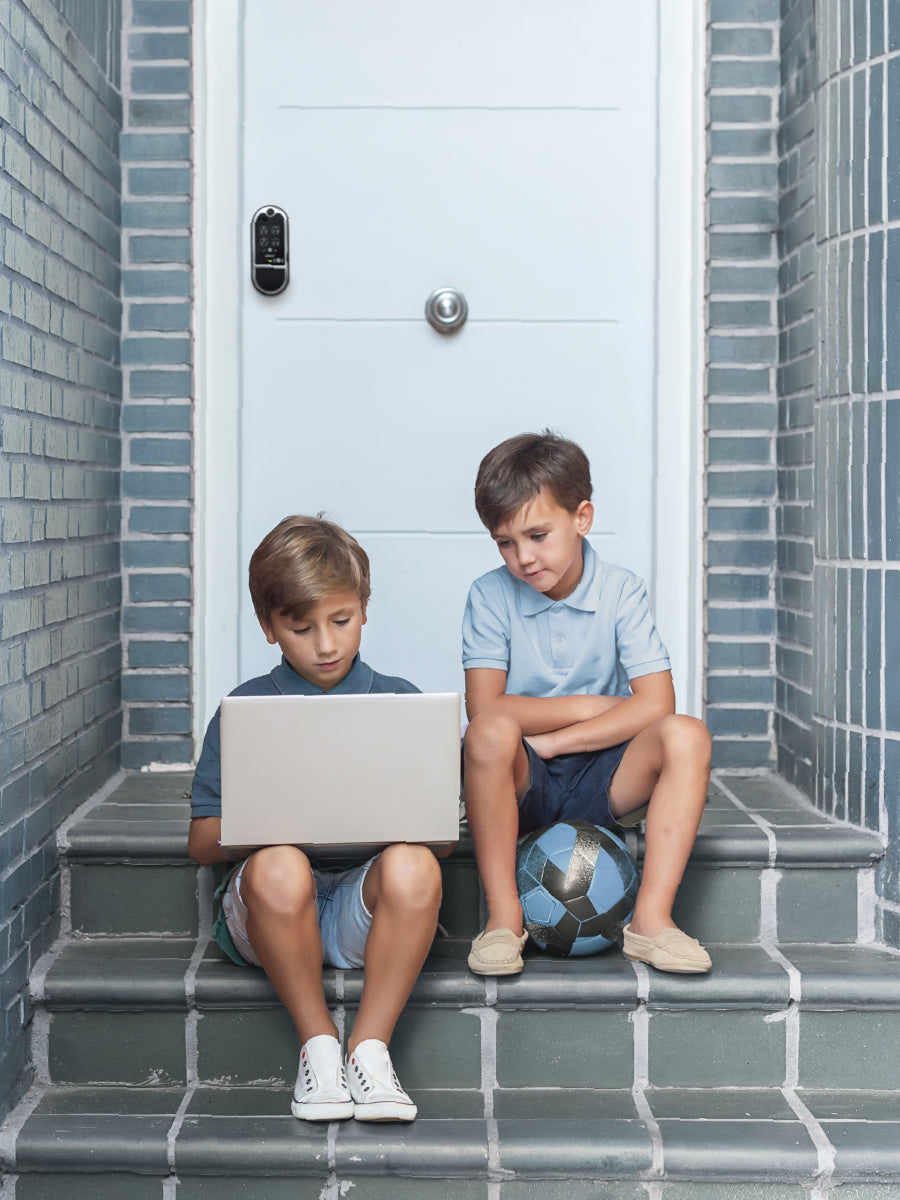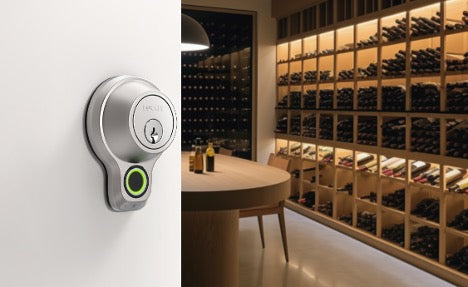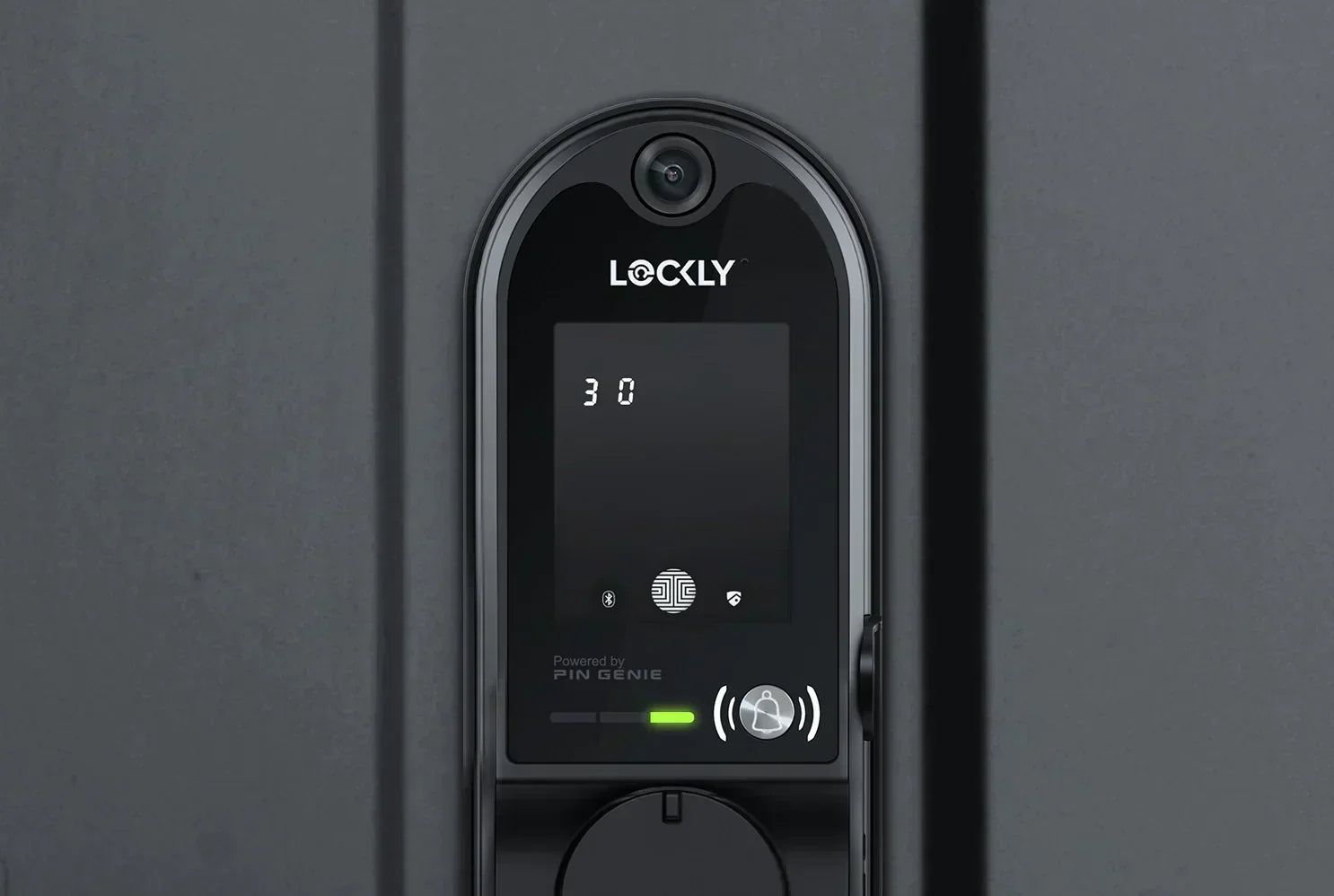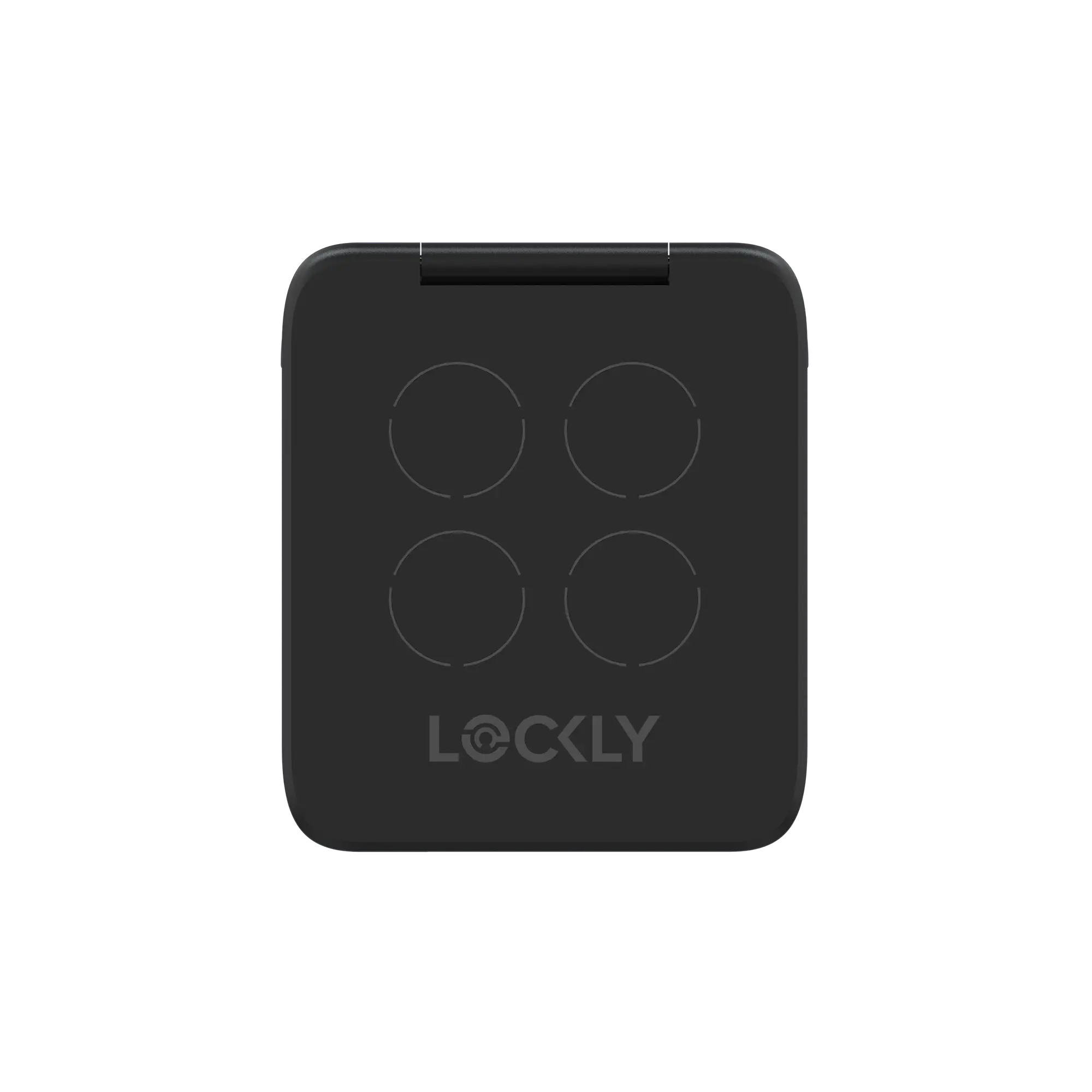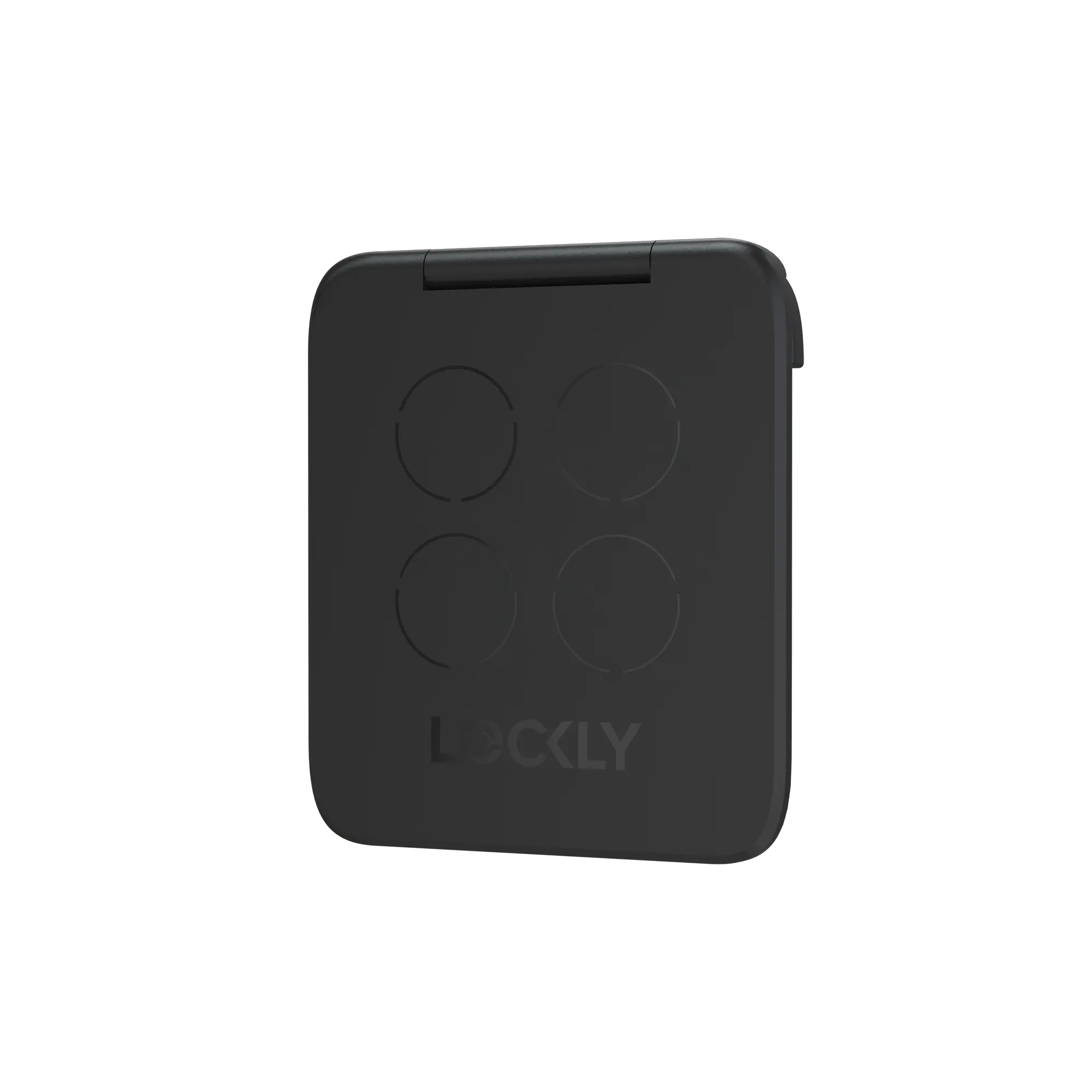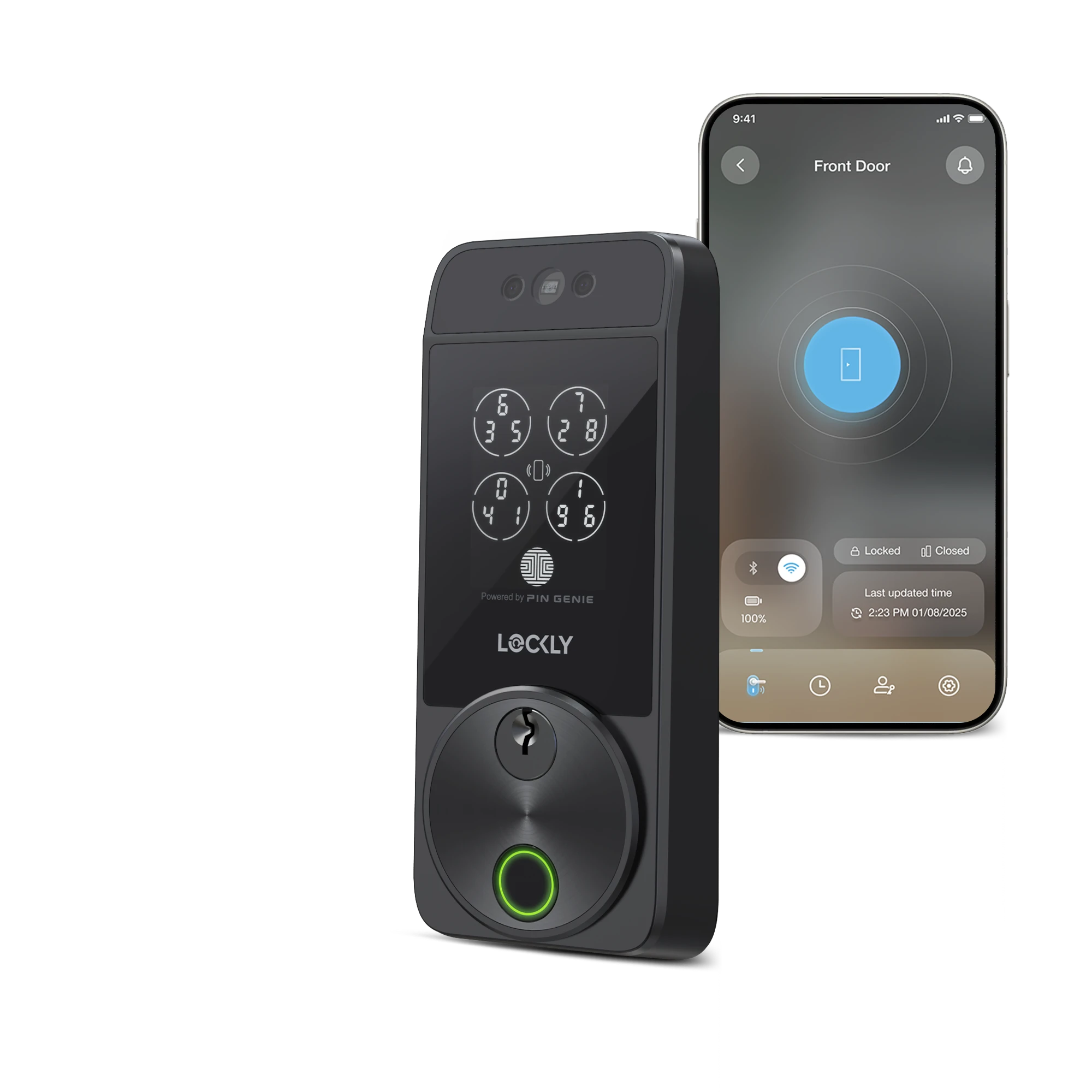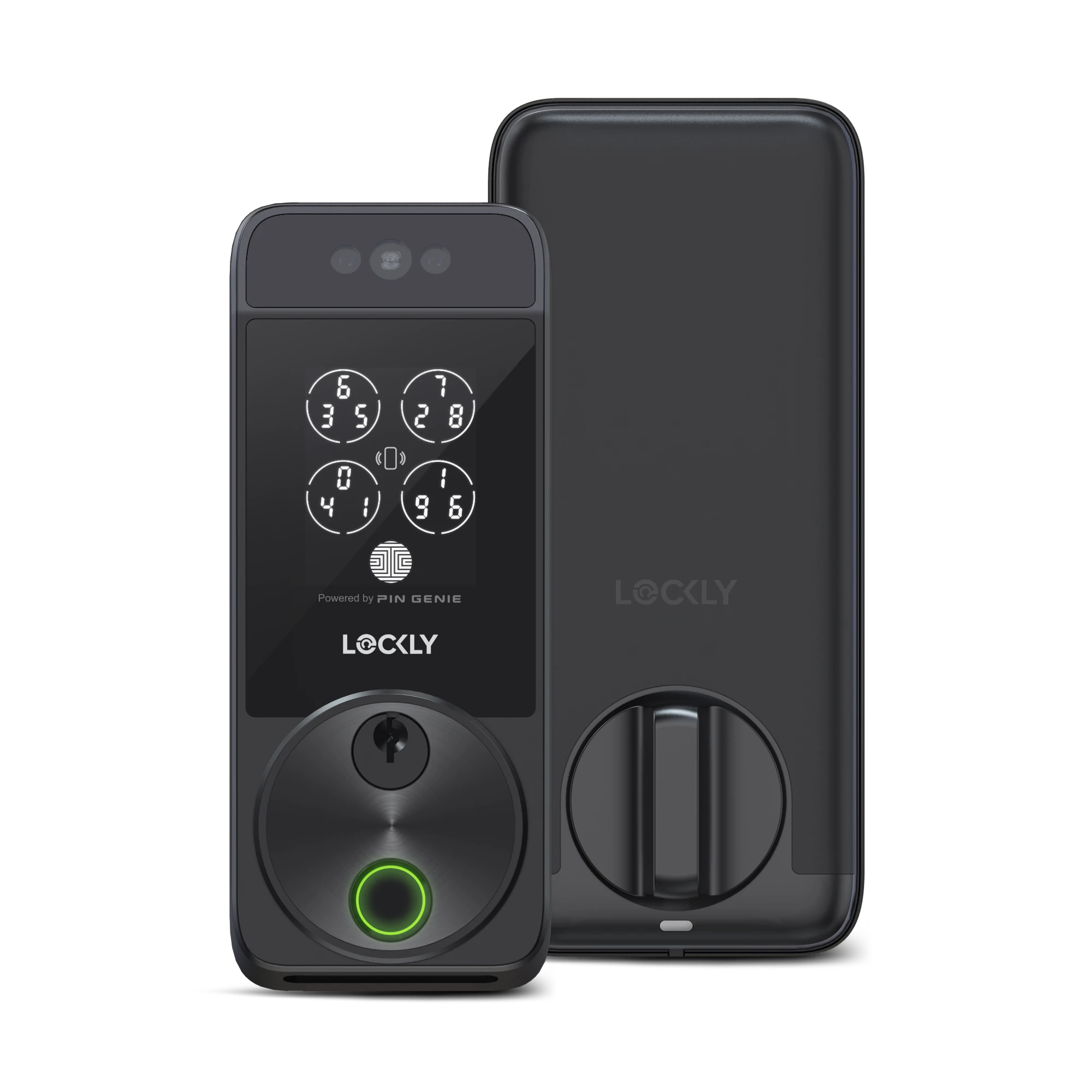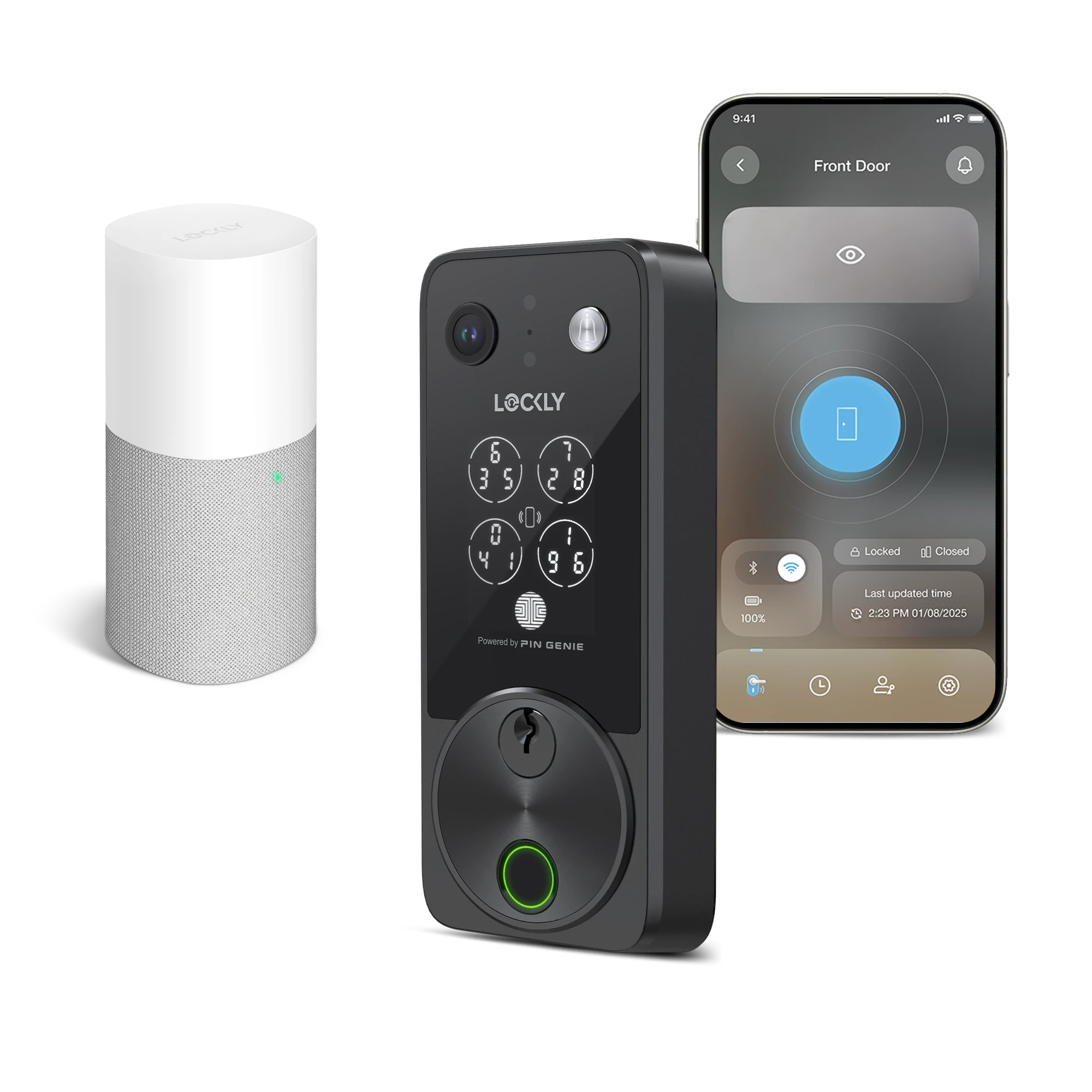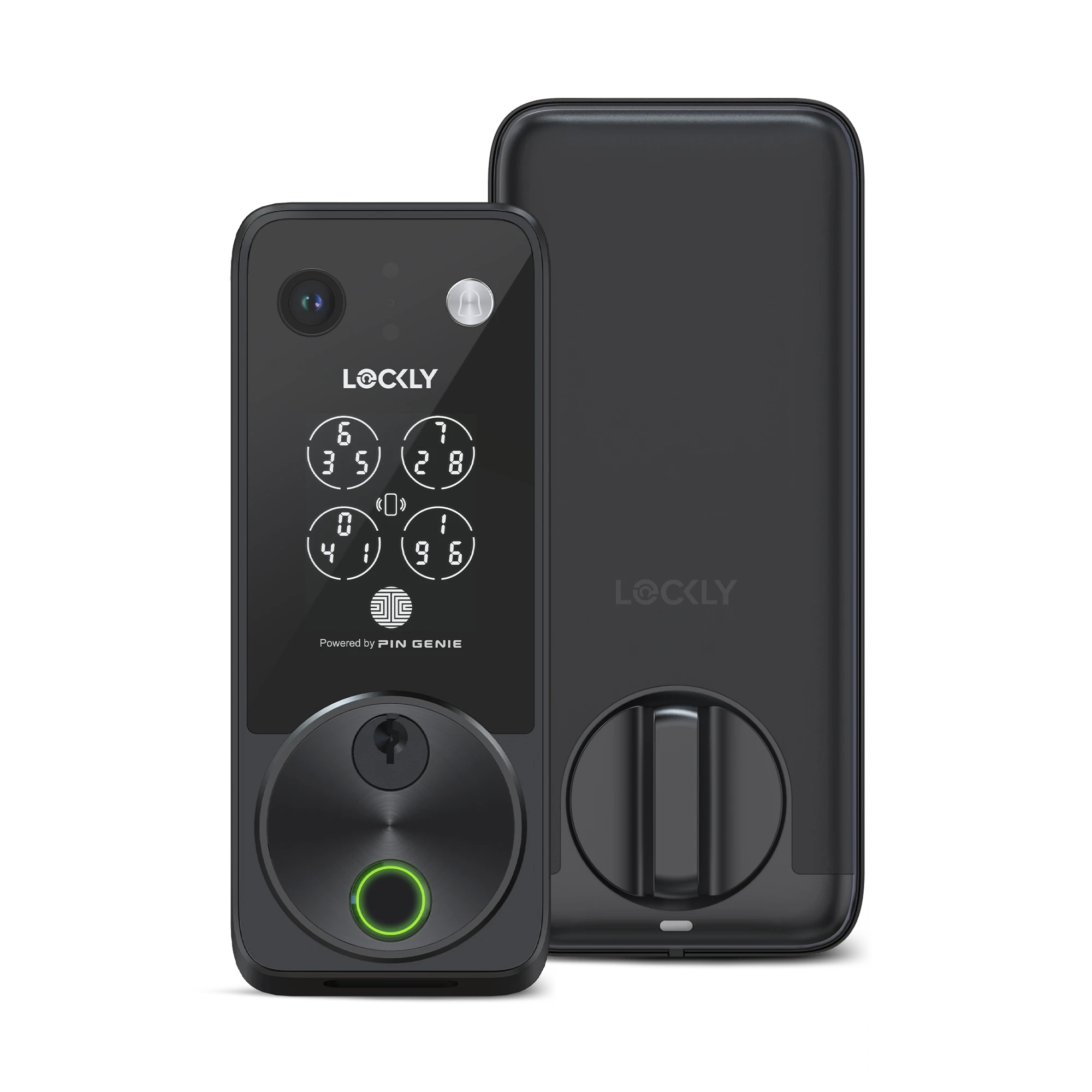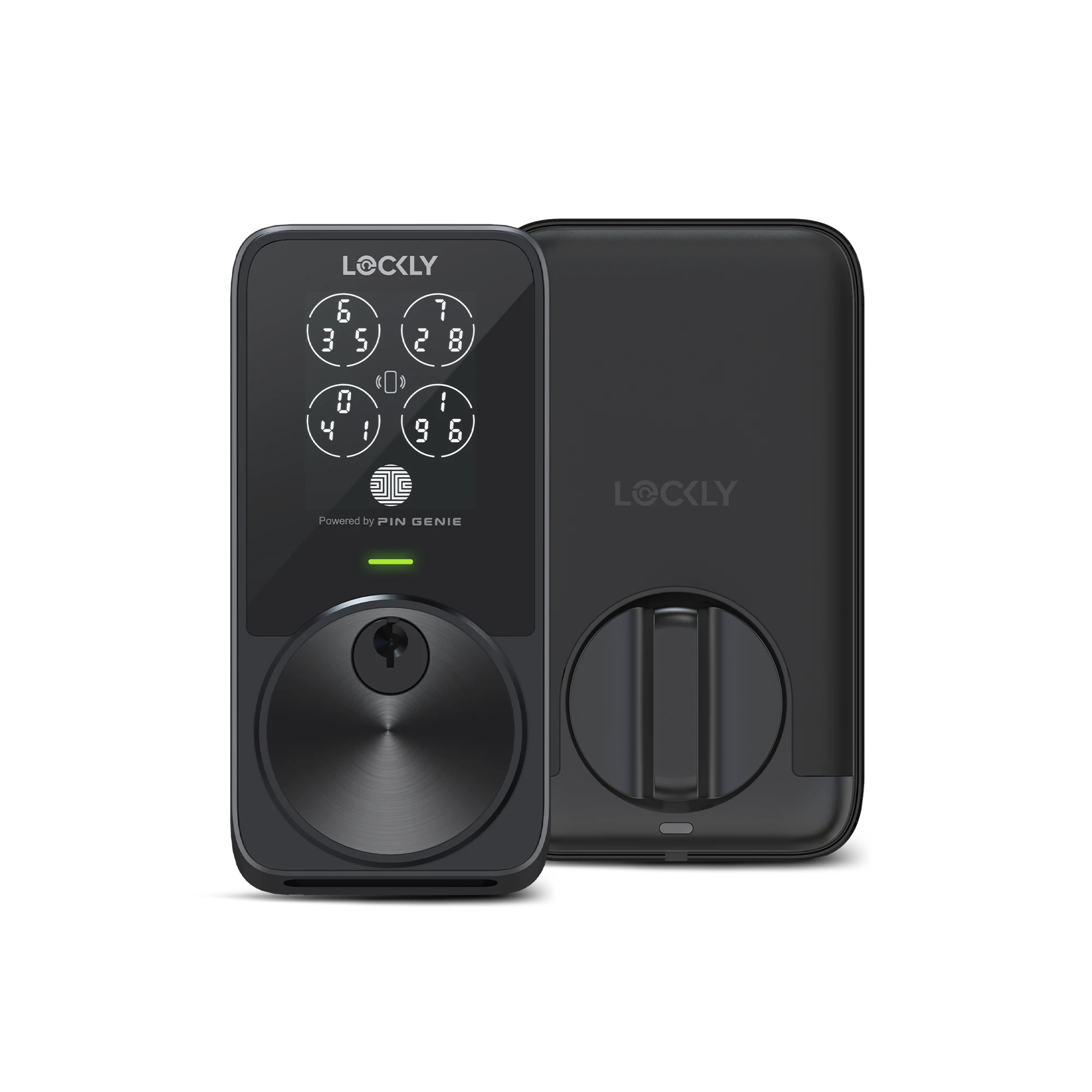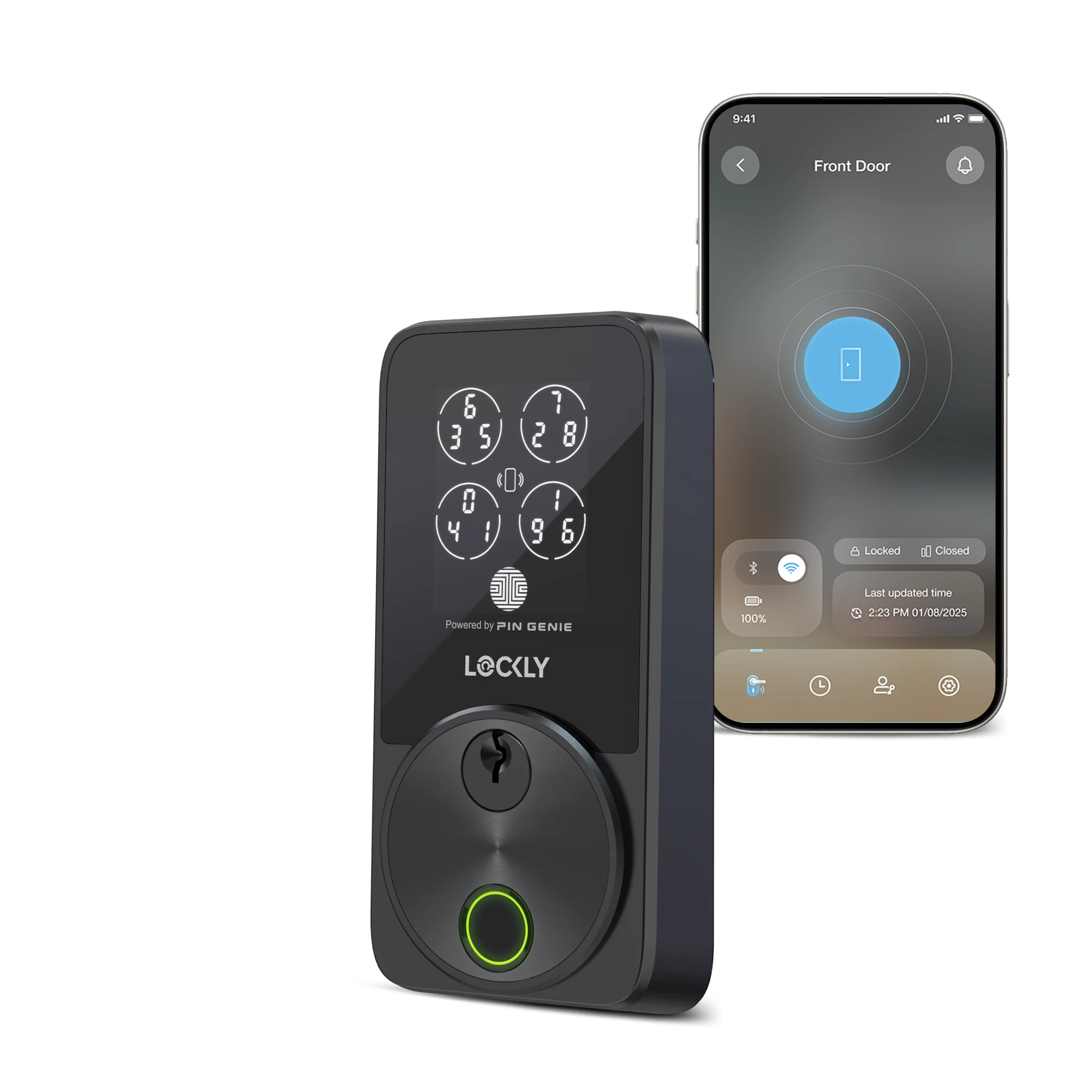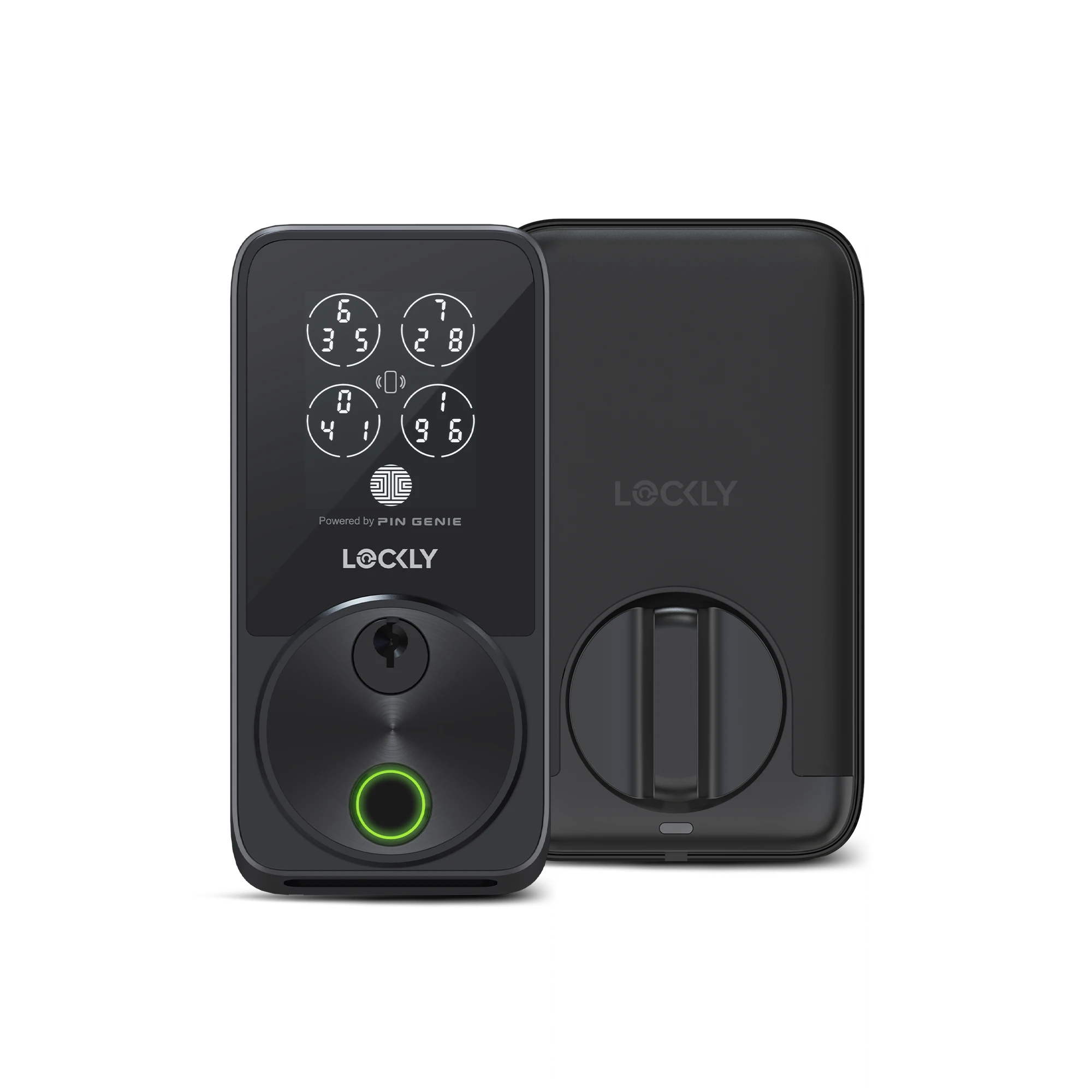AI facial recognition is transforming how we think about home security. While headlines spark debate about artificial intelligence, the Lockly Visage shows how AI can make your life easier and safer. This breakthrough technology recognizes you in under a second, works in complete darkness, and can't be fooled by photos or masks.
But rumors and misconceptions persist. Let's clear up the five biggest myths about AI facial recognition and see why it's becoming the new standard in smart home security.
Myth #1: Facial Recognition Systems Track Everyone Who Passes By
If you've watched any sci-fi movies lately, you might think AI facial recognition means your front door is constantly scanning, analyzing, and storing data about every passerby. News headlines about surveillance and privacy concerns have only fueled these fears. Many homeowners worry that installing an AI-powered smart lock means creating a 24/7 monitoring system that tracks their neighbors, delivery people, and anyone else who walks past their home.
The reality is that modern smart locks with facial recognition, like the Lockly Visage, only store and recognize faces that have been explicitly enrolled in the system. The technology doesn't automatically track or identify every person who walks past your door. Instead, it only activates when someone approaches the door and grants access to individuals whose facial data has been previously registered by the homeowner.
Here's how it works:
- For anyone not enrolled, the system detects and rejects their face
- The AI focuses solely on verifying if an approaching person matches an enrolled user
- The device does not have a continuous camera recording - it only activates when authentication is needed
- Facial recognition will be automatically disabled if there are too many rejected attempts
- All recognition happens instantly and locally on the device
Lockly's focused AI system maintains accuracy rates of up to 99.8% for enrolled users while completely ignoring non-enrolled individuals. The system will automatically disable auto-detection if there are many failed attempts. We also recommend disabling this feature if you are installing the lock in high traffic areas. The Visage's radar technology only wakes up the facial recognition when someone is actually approaching your door, helping the battery last up to 8 months between charges.
Myth #2: Your Facial Data is Vulnerable to Hackers
What about hackers? In Lockly's implementation, facial recognition data is encrypted and stored locally on the device itself, never leaving the lock or being transmitted to external servers. The system converts facial features into a unique numerical code that cannot be reverse-engineered back into an image, even if somehow compromised. This approach ensures that your biometric data remains secure and private.
- All facial recognition processing happens locally on the lock itself
- Your data is encrypted and stored as a mathematical code, not an actual image
- Even if somehow compromised, this code can't be reverse-engineered into a picture of your face
- The encryption uses the same military-grade standards used to protect classified information
- No facial data ever touches the cloud or external servers
While cloud databases can be targeted by hackers from anywhere in the world, accessing data from a Lockly device would require physical access to your lock and the ability to crack military-grade encryption.
The system's database can only hold up to 100 face profiles, and you have complete control over adding or removing access. This limited, focused approach stands in stark contrast to the massive cloud databases that make headlines when breached.
Myth #3: Facial Recognition Doesn't Work in Dark Conditions
We've all struggled with phone facial recognition failing in low light or bright sun. This has led many to believe that AI face scanning is unreliable without perfect lighting conditions. After all, if your smartphone struggles with face ID at night, how could a door lock do any better?
Modern facial recognition systems in smart locks use advanced technology to work in various lighting conditions. The Lockly Visage employs dual infrared sensors and radar technology that can accurately identify registered users even in complete darkness. Testing has shown the system still works reliably at night, even with only distant street lighting available.
- Dual infrared sensors create a clear view regardless of lighting conditions
- Radar technology maps your face in 3D, working even in complete darkness
- Advanced AI algorithms are trained specifically for varied lighting conditions
- The system successfully identifies users at night, in bright sunlight, and everything in between
- Temperature compensation ensures consistent performance in all weather
In extensive testing, the Visage successfully identified users:
- At night with only distant street lighting
- During bright midday sun
- In complete darkness
- Through rain and fog
- With backlighting from sunset/sunrise
Unlike phone facial recognition that uses simple 2D imaging, Lockly's system creates a comprehensive 3D map of facial features using multiple sensors. This multi-layered approach ensures reliable performance across all lighting conditions, achieving a 99.8% accuracy rate in real-world testing.
Myth #4: The Technology Can Be Easily Fooled
Can people fool facial recognition with simple tricks, like holding up photos or wearing basic disguises? When it comes to Lockly, our facial recognition employs multiple layers of sophisticated anti-spoofing technology that puts these concerns to rest:
- Binocular facial scanning creates true 3D mapping of facial features
- Radar technology detects the density and depth of actual human tissue
- Infrared sensors confirm body heat and living tissue
- The system requires multiple authentication factors for suspicious scans
Security testing has tried and failed to fool the system with:
- High-resolution photos
- Video playback on screens
- 3D-printed masks
- Professional theatrical makeup
- Silicon face masks
The Visage's multi-factor authentication approach has consistently proven immune to these attacks, earning it certification for use in high-security commercial installations.
Myth #5: Facial Recognition Systems Are Unreliable and Slow
This myth stems from early facial recognition systems that were notoriously unreliable and biased. Stories about AI misidentifying people or failing to recognize them after haircuts or wearing glasses have made many skeptical about trusting this technology with their home security.
But modern AI facial recognition has evolved dramatically, particularly Lockly's implementation:
- Advanced machine learning algorithms continuously improve accuracy
- The system maintains consistent performance across all demographics
- Recognition works with or without masks, glasses, or hair changes
- Identification happens in under one second
- Multiple backup access methods ensure you're never locked out
Real-world performance data shows:
- 99.8% accuracy rate across all lighting conditions
- Average recognition time of 1 second
- Consistent performance across all demographic groups
- Successful identification even with facial accessories
The system's AI has been trained on one of the most diverse datasets in the industry, ensuring reliable performance regardless of age, gender, or ethnicity. This addresses the bias issues that plagued earlier facial recognition systems.
Real-World Performance
Behind these technical capabilities lies a practical reality: facial recognition in smart locks works reliably for everyday use. Current systems recognize users in under a second, function in varied lighting conditions, and maintain security against spoofing attempts. For homeowners weighing biometric security options, facial recognition has matured beyond experimental technology into a proven access control method that delivers both security and convenience.
Experience Next-Generation Security
Ready to upgrade your home security with advanced facial recognition? The Lockly Visage combines industry-leading facial scanning technology with multiple backup access methods including fingerprint, PIN code, and Apple Home Key support. Plus, with built-in Wi-Fi, you can monitor and control your lock from anywhere.


